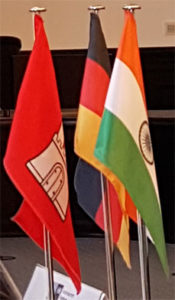GIRT Hamburg and PwC join hands to organize an event to present results of recent studies of patterns in inwards and outwards FDI between India and Germany
Foreign direct investments (FDI) between India and Germany have been growing steadily. As per the official Bundesbank data, the consolidated stock of German FDI in India grew more than five-folds between 2006 and 2016: from €2.9 billion to €15.9 billion.[1] Today more than 600 German companies employ over 300,000 people in India and generate annual revenues worth €32 billion, which does not show in the trade statistics. Similarly, close to 100 Indian companies have invested €3.5 billion in Germany. They employ more than 20,000 people and generate annual revenues worth €11 billion in Germany.
So far, however, little information is publically available about the current patterns of German FDI in India, and vice versa, concerning the drivers of FDI, regional distribution and its effects on the host economy. German-Indian Round Table (GIRT) Hamburg is pleased to hold an event in cooperation with PwC Hamburg to shed more light on this and share this valuable knowledge with the interested firms, policy makers, media and individuals.
The event will begin with a brief welcome by Mr. Frank Quassowsky, Partner at PwC and Head of PwC’s India-German Business Group and by Dr. Rajnish Tiwari, Head of GIRT Hamburg.
The introductory words of the hosts shall be followed by a welcome address by India’s Consul General in Hamburg, Mr. Madan Lal Raigar, who will grace the event as chief guest.
The main keynote of the event will be on “German direct investments in India: Motives, regional distribution and effects” by Dr. Madan M. Arora. Weiterlesen

